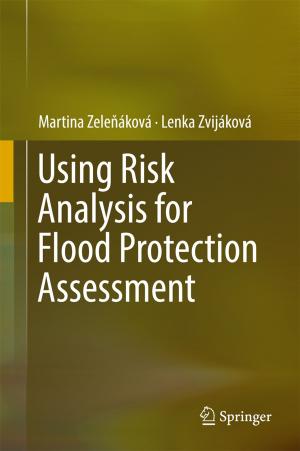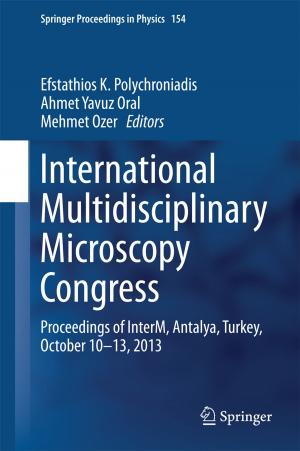Methods of Detecting Exoplanets
1st Advanced School on Exoplanetary Science
Nonfiction, Science & Nature, Science, Physics, Nuclear Physics, Astrophysics & Space Science, Technology| Author: | ISBN: | 9783319274584 | |
| Publisher: | Springer International Publishing | Publication: | April 12, 2016 |
| Imprint: | Springer | Language: | English |
| Author: | |
| ISBN: | 9783319274584 |
| Publisher: | Springer International Publishing |
| Publication: | April 12, 2016 |
| Imprint: | Springer |
| Language: | English |
In this book, renowned scientists describe the various techniques used to detect and characterize extrasolar planets, or exoplanets, with a view to unveiling the “tricks of the trade” of planet detection to a wider community. The radial velocity method, transit method, microlensing method, and direct imaging method are all clearly explained, drawing attention to their advantages and limitations and highlighting the complementary roles that they can play in improving the characterization of exoplanets’ physical and orbital properties. By probing the planetary frequency at different distances and in different conditions, these techniques are helping astrophysicists to reconstruct the scenarios of planetary formation and to give robust scientific answers to questions regarding the frequency of potentially habitable worlds. Twenty years have passed since the discovery of a Jupiter-mass companion to a main sequence star other than the Sun, heralding the birth of extrasolar planetary research; this book fully conveys the exciting progress that has been achieved during the intervening period.
In this book, renowned scientists describe the various techniques used to detect and characterize extrasolar planets, or exoplanets, with a view to unveiling the “tricks of the trade” of planet detection to a wider community. The radial velocity method, transit method, microlensing method, and direct imaging method are all clearly explained, drawing attention to their advantages and limitations and highlighting the complementary roles that they can play in improving the characterization of exoplanets’ physical and orbital properties. By probing the planetary frequency at different distances and in different conditions, these techniques are helping astrophysicists to reconstruct the scenarios of planetary formation and to give robust scientific answers to questions regarding the frequency of potentially habitable worlds. Twenty years have passed since the discovery of a Jupiter-mass companion to a main sequence star other than the Sun, heralding the birth of extrasolar planetary research; this book fully conveys the exciting progress that has been achieved during the intervening period.















